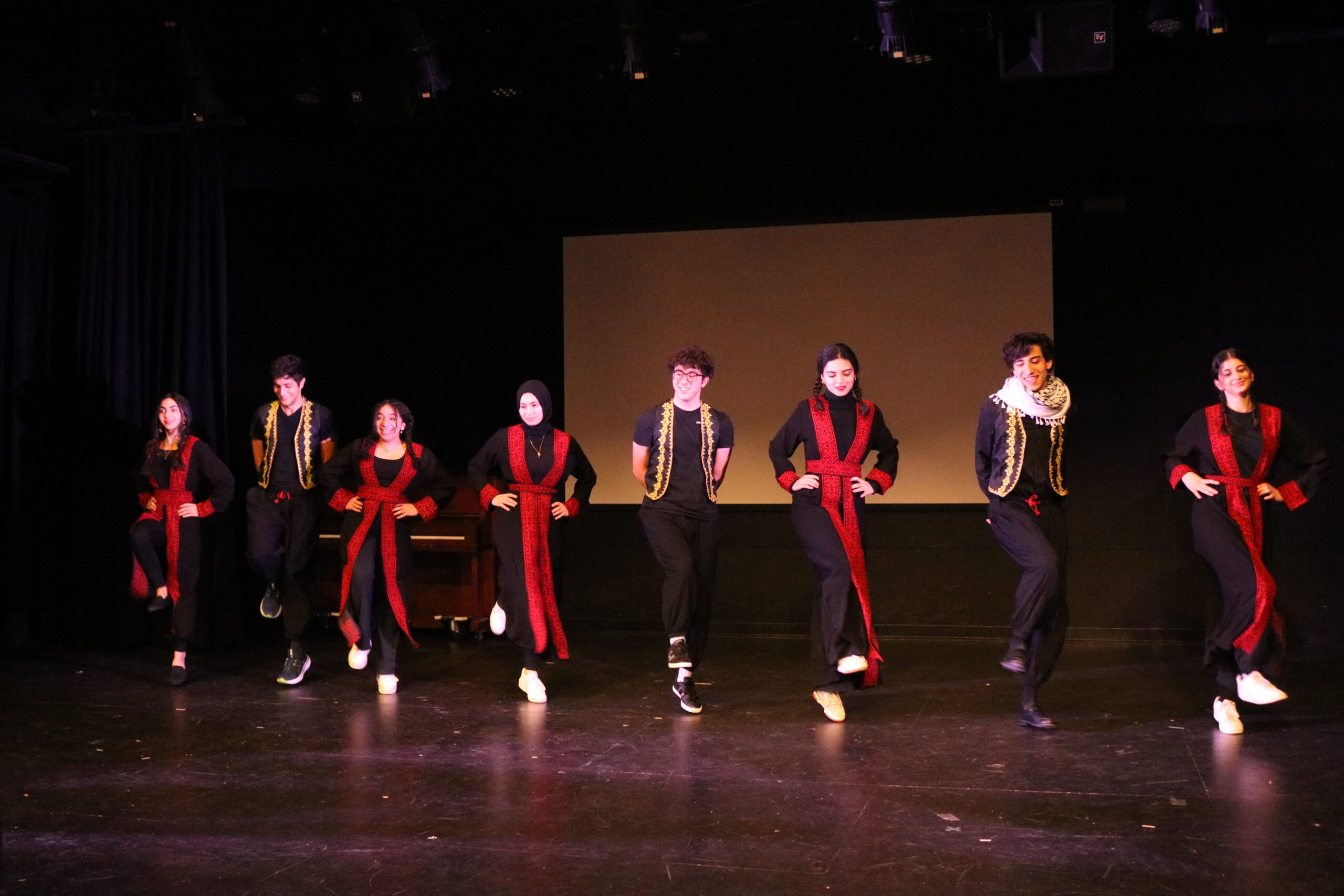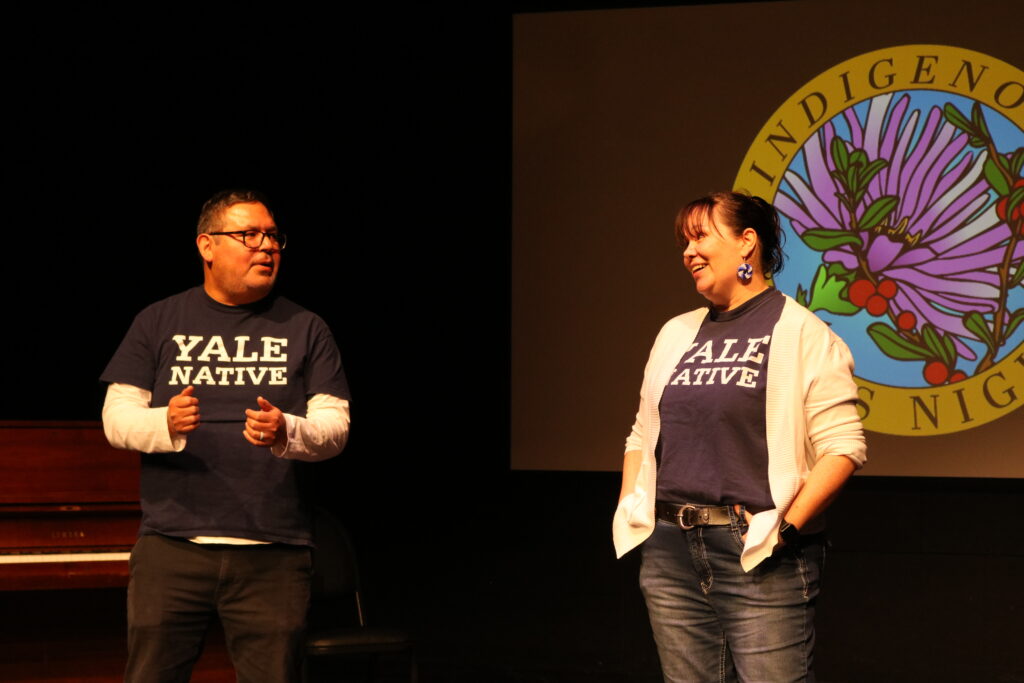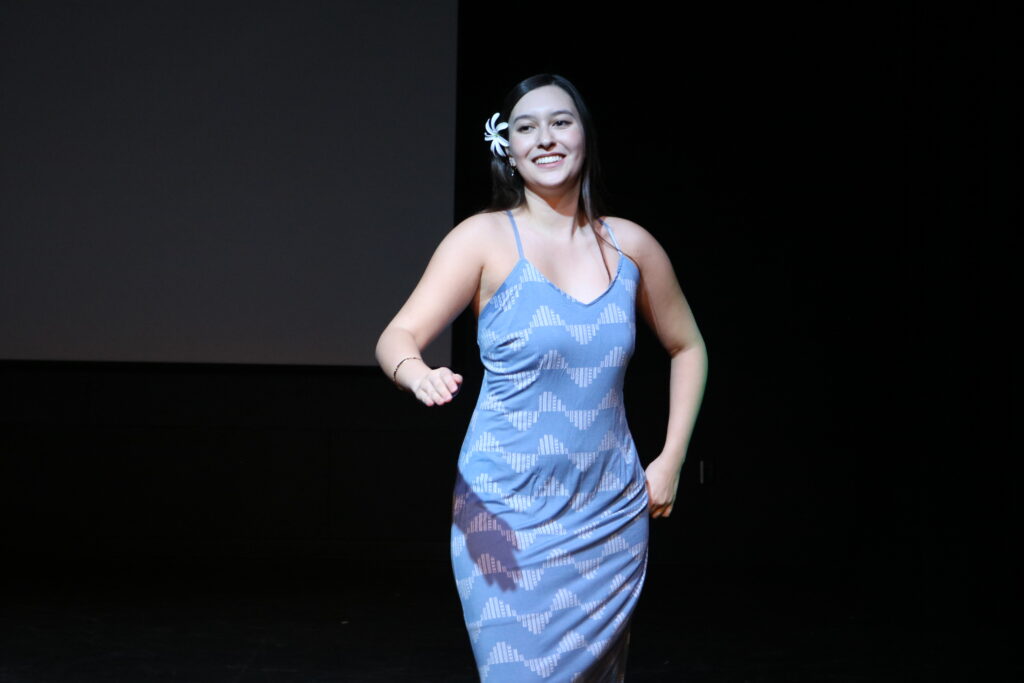
Courtesy of Luke Parish
On Friday, Feb. 7, the Native American Cultural Center hosted its Fourth Annual Indigenous Arts Night in the Stiles, Morse Crescent Theater.
As the lights dimmed, the close-knit space transformed to spotlight a variety of performances from Indigenous students and faculty. From live music to poetry to comedy performances, the Indigenous Arts Night showcased an array of artistic and cultural expression.
“I think it’s an opportunity to share the diverse and wonderful talent that people have,” said Matthew Makomenaw, assistant dean of Yale College and director of the Native American Cultural Center.
Arts Night featured performances from Yale Dabke, an Arabian dance group at Yale, as well as Indigiprov — Yale’s premier Indigenous comedy-improv group. As a member of Indigiprov, Dean Makomenaw wanted the audience to laugh and enjoy a sense of community brought on by the celebratory night.

The inaugural celebration, which began before COVID-19, has since been revived and continues as an annual performance. Even with moments of laughter and enthusiastic crowd work, this year’s event held a tone of sincerity included in the two featured films.
NACC Arts Liaison Naima Blano-Norberg ’25 produced one of the films presented at arts night. Her film documented a collection of memories from her trip on a Indigenous Peace and Dignity Journey, a seventh month Intercontinental Prayer Run from Alaska to Argentina. Blano-Norberg joined natives on the run for two months from Washington to Arizona.
Blanco-Norberg also organized Arts Night for the second year in a row and said that the celebratory event aims to bring together Indigenous artists, performers and art makers in one space.
“Over the two years, I’ve seen a lot more Indigenous art makers come through the space who are willing to showcase their art and it’s really beautiful,” she said. “Often you don’t see indigenous art makers showcasing their work in Yale spaces.”
She said that she is grateful to the NACC for providing this artistic outlet for Indigenous students. Hopefully, more artists will be involved in future events, she added.
Arti Dixon, an Indigenous drummer and musician, was accompanied by senior lecturer Jay Gitlin on the piano for their rendition of “What is This Thing Called Love?” by Yale alumnus Cole Porter, class of 1913.

Some student performers were returning performers from last year’s stage.
Pianist Jairus Rhoades ’26 performed an original composition inspired by a Samoan hymn and Tinikling, a traditional Filipino folk dance. He has grown more comfortable sharing his identity, he said, by combining his heritage with his background in classical music.

“Part of rediscovering my native identity while I’m away from home is engaging in sharing it with people, and how I choose to share it,” Rhoades said. “Usually I try to combine that with my background in music, and I think that I could use any opportunity, especially one as welcoming of an audience as like at Indigenous Arts Nights.”
This year’s celebration marked Helen Shanefield ’26’s third year performing Hula. Shanefield has been dancing this performance-style for several years.
In contrast to her previous solo performances, Shanefield danced alongside Kamalu Ogata ’25 to the song “Hula O Makee” by Genoa Keawe.
“I’ve been dancing Hula for many years at home, so I really appreciated this opportunity for all of us being able to showcase our different cultural performances from indigenous nations around the US and the world,” Shanefield said.

Her extensive background in hula dancing helped her teach the choreography to her dance partner. During intermission, Shanefield invited audience members to join her onstage as she led a step by step tutorial.
Shanefield said that she was excited about the future growth of Indigenous Arts Night and the involvement of more people in Pacific Islander art forms at Yale. She plans to start teaching hula workshops alongside La’ikū Layaoen ’28, another hula dancer.
Blanco-Norberg feels fortunate to be able to contribute to this impactful space at Yale that honors Indigenous heritage and acknowledges the land’s history while simultaneously enabling people to be themselves.
“I think students definitely have to carve their own way, especially Indigenous students,” said Blanco-Norberg. “The NACC provides a platform, but I think it’s the students who really drive the force in creating spaces like this and cultivating the artwork and the performances to fill them with life.”
The NACC is located on 26 High St.







